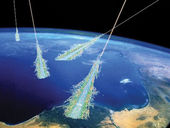
There's some interesting information of the six month trend of neutrons being detected globally that I want to bring to discussion, but first I thought that a primer on cosmic rays, neutrons, and their interaction with the atmosphere might be helpful to the many layman readers here. - Anthony
Cosmic rays are energetic particles that originate in space and our sun and collide with particles as they zip through our atmosphere. While they come from all directions in space, and the origination of many of these cosmic rays is unknown, they has recently been shown that a larger percentage emanate from specific deep space sources. Cosmic rays were originally discovered because of the ionization they produce in our atmosphere. They cause ionization trails in the atmosphere much like you see in a simple science project called a cloud chamber, shown below right:
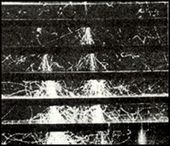
In the past, we have often referred to cosmic rays as "galactic cosmic rays" or GCR's, because we did not know where they originated. Now scientists have determined that the sun discharges a significant amount of these high-energy particles. "Solar Cosmic Rays" (SCR's - cosmic rays from the sun) originate in the sun's chromosphere. Most solar cosmic ray events correlate relatively well with solar flares. However, they tend to be at much lower energies than their galactic cousins.
Because Earth's atmosphere also reacts much like the ionization trail effect seen in the Wilson cloud chamber, scientists such as Svensmark have postulated that galactic cosmic rays can affect the earth by causing changes in weather and possibly long term climate. Moving at close to the speed of light, these nuclear fragments smash into air molecules hard enough to knock electrons loose. This well-documented process creates negatively and positively charged ions.
Like the cloud trails seen in the Wilson cloud chamber, cosmic ray ionization trails in our atmosphere can act as cloud seeds. Some studies suggest that ions play a central role in creating aerosols. Aerosols are minute but important atmospheric particles that can serve as the cores of growing cloud droplets. Aerosols can cause clouds to form in the upper atmosphere, after the particles collide with other atmospheric particles in the troposphere and conglomerate into larger particles.
Aerosols: Many atmospheric aerosols are liquid droplets containing dissolved sea salt from sea spray, sulfuric acid (H2SO4), organic molecules from trees and plants, and other compounds. Over agricultural and urban areas, dust and soot are common aerosols Soot particles emanate from incomplete combustion of fuels such coal, wood, oil, jet fuel, and kerosene. Soot consists chiefly of amorphous carbon and tar like substances that cause it to adhere to surfaces. Both liquid and solid aerosols help clouds develop by encouraging the condensation of water vapor, which does not occur readily without an original seed particle of some sort in the air.
A cosmic ray, especially a high energy one from deep space, can cause an entire family tree of smaller particles and ionization trails. See this animation below created by the Cosmus group at the University of Chicago.

The process of a cosmic ray particle colliding with particles in our atmosphere and disintegrating into smaller pions, muons, and the like, is called a cosmic ray shower. These particles can be measured on the Earth's surface by neutron monitors.
Neutron Monitors. Ground-based neutron monitors detect variations in the approximately 500 Mev to 20 GeV portion of the primary cosmic ray spectrum.
(Note: 1 Mega electron Volt = 1.60217646 × 10-13 joules)
This class of cosmic ray detector is more sensitive in the approximate 500 Mev to 4 GeV portion of the cosmic ray spectrum than are cosmic ray muon detectors. The portion of the cosmic ray spectrum that reaches the Earth's atmosphere is controlled by the geomagnetic cutoff which varies from a minimum (theoretically zero) at the magnetic poles to a vertical cosmic ray cutoff of about 15 GV (ranging from 13 to 17) in the equatorial regions. (Note: GV is a unit of magnetic rigidity. Magnetic rigidity is a particle's momentum per unit charge. It is the relevant quantity for characterizing a cosmic ray's ability to penetrate Earth's magnetic field.).
The primary cosmic ray particles interact with the atmosphere and generate secondaries, some of which will reach the surface of the Earth.
When the secondary cosmic rays interact in the monitor, (actually in lead surrounding the counters) they cause nuclear disintegrations, or "stars". These stars are composed of charged fragments and neutrons typically in the energy range of tens to hundreds of MeV (million electron-volts), even up to GeV energies. As a result of these high energy nuclear interactions, there will be more secondary fragments generated than incident particles and hence there is a multiplier effect for the counters. The neutrons are moderated and then counted using Boron tri-fluoride (BF3) proportional counters which are efficient thermal neutron detectors; hence the name neutron monitor.
The original design by Simpson is often designated as an IGY neutron monitor. From that link:
John A. Simpson, at the University of Chicago, invented and developed the neutron monitor over the years 1948-50 and found that the Earth's magnetic field could be used as a spectrometer to allow measurements of the cosmic ray spectrum down to low primary energies. The magnetic latitude of a particular neutron monitor determines the lowest magnetic rigidity of a primary that can reach the monitor, the so-called "cut-off rigidity". The station's altitude determines the amount of absorbing atmosphere above the station and hence the amount of absorption of the secondary cosmic rays (the higher the station, the higher the counting rate). By using a combination of lead (to produce local interactions), paraffin or polyethylene (to moderate or slow down the neutron component) and multiple slow-neutron counters, Simpson greatly increased the counting rate in his monitor design.The worldwide network neutron monitors that have since been established gather data that have shown there is a correlation between periodic solar activity and the earthly neutron count. For example:
This plot shows data from the Climax, Colorado neutron monitor operated by the University of Chicago. The cosmic rays show an inverse relationship to the sunspot cycle because Sun's magnetic field is stronger during sunspot maximum and shields the Earth from cosmic rays.
Right now we are near the solar minimum, but neutron counts are still increasing. The current science says that if we had passed solar minimum, neutron counts should be decreasing.
Michael Roynane writes today:
The Bartol Research Institute of the University of Delaware manages five real-time neutron monitors, at widely dispersed locations, all of which indicate that over the last six months cosmic rays are increasing. This would not support the hypothesis that we are past solar minimum and suggests that solar minimum has not yet been reached.Links to the Bartol Research Institute of the University of Delaware:
Bartol Research Institute
Neutron Stations
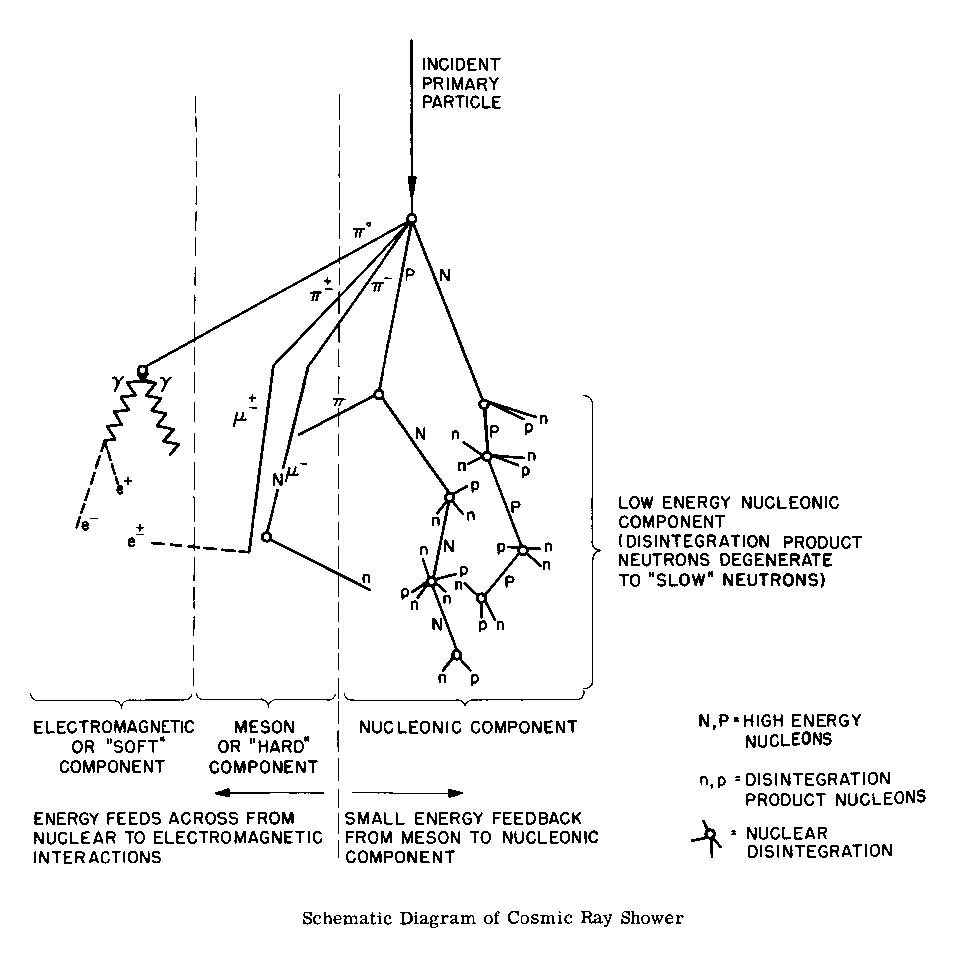
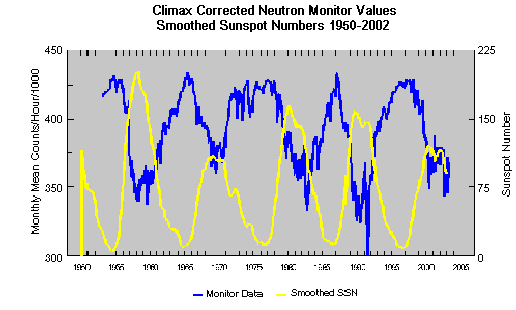
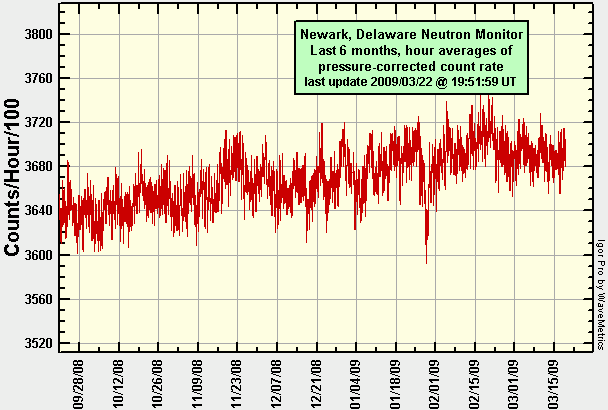
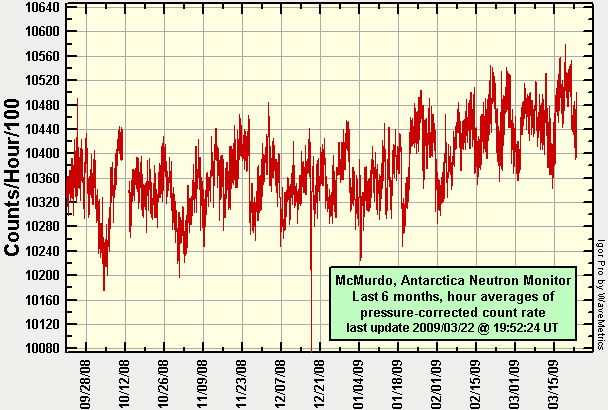
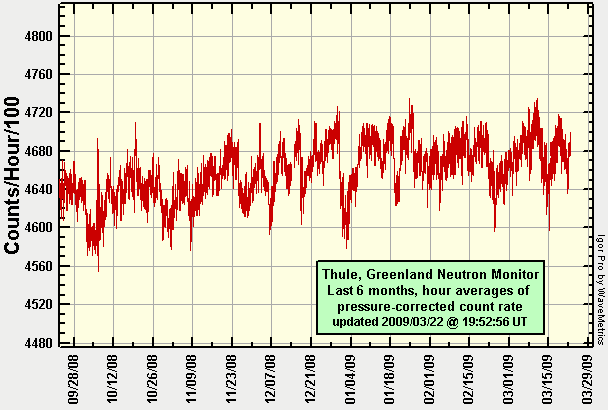
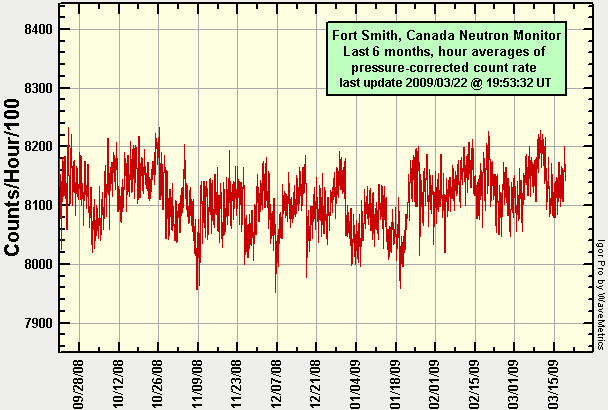
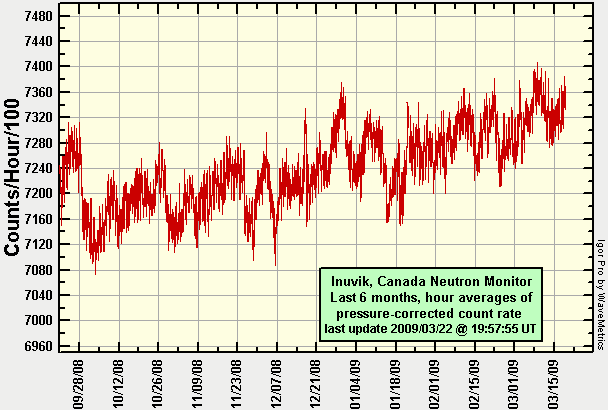



Reader Comments
to our Newsletter